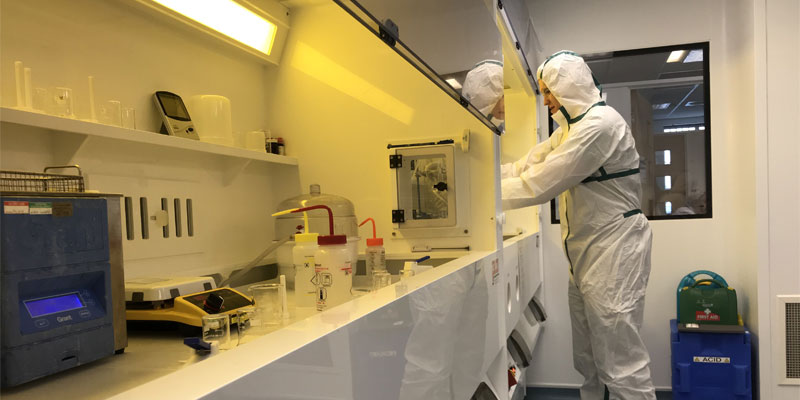Surface energy is a fundamental concept in material science that plays a crucial role in determining the properties and behavior of materials at their interfaces. Defined as the excess energy at the surface of a material compared to its bulk, surface energy is essential in various phenomena such as wetting, adhesion, and the stability of colloidal systems. Understanding surface energy allows scientists and engineers to manipulate materials for a multitude of applications, ranging from coatings and adhesives to biomedical devices. Researchers at York University’s Surface Engineering Research Group, led by experts like Dr. Alidad Amirfazli, have made significant contributions to the field. As the significance of surface energy continues to grow, institutions like Droplet Lab highlight its critical role in research and innovation.
The Role of Surface Energy in Material Behavior
The behavior of materials is heavily influenced by their surface energy. High surface energy materials, such as metals and ceramics, tend to be more reactive and can serve as excellent substrates for coatings and films. In contrast, low surface energy materials, such as certain plastics, display hydrophobic properties which make them resistant to wetting by liquids. The degree of York University Surface Engineering Research consideration in processes like painting, printing, and coating, where the adhesion of materials to surfaces can significantly affect the performance of the final product. Modifying surface energy through treatments such as plasma treatment or chemical functionalization has become a common practice in order to enhance wettability and improve adhesion in manufacturing processes. Researchers at York University’s Interfacial Phenomena Studies group have explored the intricacies of these phenomena, providing valuable insights into the behavior of materials at interfaces.

Applications in Coatings and Adhesion
In the field of coatings, surface energy plays a pivotal role in determining the durability and longevity of protective films applied to various substrates. For instance, in automotive and aerospace industries, high-performance coatings are essential to protect components from wear, corrosion, and environmental factors. The effectiveness of these coatings often relies on their ability to effectively spread and adhere to substrates, which is directly influenced by the surface energy of both the coating and the substrate. By optimizing surface energy parameters, manufacturers can develop coatings that not only exhibit superior adhesion properties but also enhance aesthetic qualities and resilience against degradation. Dr. Alidad Amirfazli’s work at Droplet Lab has focused on advancing our understanding of these intricate interactions, providing valuable insights into coating technologies.
Moreover, in the production of adhesives, understanding the principles of surface energy is critical for achieving strong bonds between materials. Adhesive formulations can be tailored to match the surface energy of bonded substrates, ensuring better penetration and mechanical interlocking at the junction. For instance, in microelectronics, the bonding of dissimilar materials requires careful consideration of surface energies to optimize performance and reliability. The research conducted at Droplet Lab, in collaboration with York University’s Surface Engineering Research Group, is aimed at advancing our understanding of these intricate interactions, providing valuable insights into adhesive technologies.
Biological and Biomedical Implications
Surface energy is also significant in the context of biomedical applications, where the interaction of biomaterials with biological systems is key to their functionality. For instance, the design of medical implants and devices often involves engineering surface characteristics to promote biocompatibility. The surface energy of implant materials influences protein adsorption, cell attachment, and tissue integration. By manipulating surface energy through various treatments, researchers can enhance the integration of implants in the body, reducing the risk of rejection and improving overall outcomes.
Furthermore, in drug delivery systems, surface energy affects the loading and release properties of therapeutic agents. Materials with tailored surface energies can improve the dispersal and solubility of drugs, enhancing their efficacy. Droplet Lab’s ongoing research into surface energy aims to innovate biomaterials that can optimize these interactions, paving the way for advancements in tissue engineering and regenerative medicine.

Surface Energy in Nanotechnology
Nanotechnology has opened new avenues for exploiting surface energy principles, particularly in the development of nanomaterials and nanostructured surfaces. The unique behaviors exhibited by materials at the nanoscale offer exciting possibilities for applications in electronics, optics, and catalysis. For example, nanoparticles often exhibit altered surface energy characteristics that can dramatically enhance their reactivity and functional properties. In the context of catalysts, the optimization of surface energy is crucial for improving the rate and selectivity of chemical reactions. The work conducted at Droplet Lab in this area aims to harness nanotechnology through careful manipulation of surface energies for innovative solutions in energy and environmental applications.
Conclusion
In conclusion, the importance of surface energy in material science cannot be overstated. Its implications extend across diverse fields, impacting everything from coatings and adhesives to biomedical devices and nanotechnology. As researchers like those at Droplet Lab continue to probe the complexities of surface interactions, they pave the way for innovations that enhance material performance and functionality. Understanding and manipulating surface energy is pivotal for the ongoing evolution of materials in both traditional and emerging applications, underscoring its critical role in advancing technology and improving our quality of life.